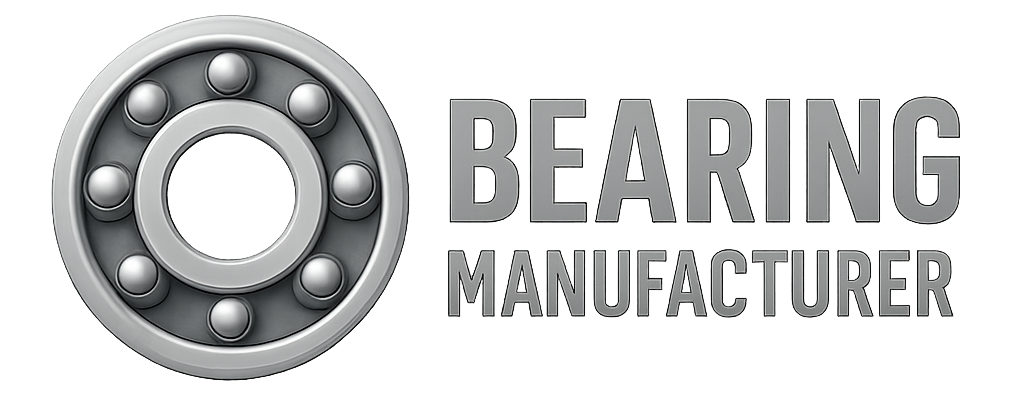In modern engineering and manufacturing, ceramic balls—commonly used in ceramic bearings—are increasingly replacing traditional steel balls in critical applications. Their ability to operate under extreme temperatures, resist wear and corrosion, and maintain dimensional stability makes them indispensable in sectors such as aerospace, energy, precision instrumentation, and high-speed machinery.
This guide examines the five most common ceramic ball types, explains their key performance benefits, and compares their suitability for various industrial uses.
1. Alumina Oxide (Al₂O₃) Balls – High-Temperature Specialists
Maximum operating temperature: up to 3180 °F (1750 °C)
Hardness: High (excellent wear resistance)
Density: 3.6–3.9 g/cm³
Key Advantages
-
Outstanding thermal stability for continuous high-heat operation.
-
Excellent abrasion resistance and chemical inertness.
-
Maintains strength even in furnace or kiln environments.
Typical Applications
-
Chemical pumps, down-hole pumps, valves
-
Bearings in high-heat industrial equipment
-
Precision gages and flowmeters used in harsh conditions
2. Zirconia (ZrO₂) Balls – Impact and Crack Resistant
Unique Property: Transformation toughening—strengthens under localized stress to prevent crack propagation.
Density: ~6.0 g/cm³ (higher than alumina)
Thermal conductivity: Low (good for thermal insulation in assemblies)
Key Advantages
-
Exceptional fracture toughness and load-bearing capability.
-
High wear resistance in abrasive media.
-
Dimensional precision suitable for precision fluid control.
Typical Applications
-
Check valves in flow control systems
-
Precision bearings under high load
-
Equipment requiring dimensional stability under fluctuating loads
3. Ruby & Sapphire (Corundum) Balls – Lightweight Precision Components
Material: Single-crystal synthetic sapphire (Al₂O₃)
Hardness: 9 on Mohs scale (just below diamond)
Thermal expansion coefficient: ~25% of most metals
Key Advantages
-
Non-corrosive and electrically insulating
-
Extreme hardness for long service life in precision devices
-
Low thermal expansion for stable measurements
Typical Applications
-
Instrument wear points
-
Probe tips in coordinate measuring machines (CMMs)
-
Floats in precision flowmeters
-
High-end watch bearings
4. Silicon Nitride (Si₃N₄) Balls – The Premium Choice for Bearings
Density: ~3.2 g/cm³ (lighter than steel, enabling higher speeds)
Thermal expansion: Very low (reduces bearing stress during temperature swings)
Key Advantages
-
Reduced friction and heat generation in bearings
-
Excellent performance under high speed and heavy load
-
Minimal lubrication requirements (ideal for cleanroom or vacuum environments)
-
Corrosion resistance for marine and chemical settings
Typical Applications
-
High-speed spindle bearings in CNC machines
-
Aerospace control actuators
-
Automotive turbochargers and electric motors
5. Silicon Carbide (SiC) Balls – Extreme Strength for Harsh Environments
Hardness: Second only to diamond
Maximum operating temperature: >1000 °C
Density: ~3.2 g/cm³
Key Advantages
-
Superior wear resistance in abrasive media
-
Excellent thermal and chemical stability
-
Lightweight yet extremely strong
-
Electrical semiconductor properties for specialized applications
Typical Applications
-
Bearings in high-temperature furnaces
-
Aerospace propulsion and satellite mechanisms
-
High-temperature energy sector components
-
Semiconductor manufacturing equipment
Comparative Properties Table
| Type | Material | Max Temp (°C) | Hardness | Density (g/cm³) | Key Advantages | Common Applications |
|---|---|---|---|---|---|---|
| Alumina Oxide | Al₂O₃ | 1750 | High | 3.6–3.9 | High-temp resistance, chemical inertness | Pumps, valves, bearings |
| Zirconia | ZrO₂ | ~600 | Very high (toughening effect) | ~6.0 | Crack resistance, precision fit | Check valves, load-bearing bearings |
| Ruby/Sapphire | Al₂O₃ (single crystal) | ~1000 | Very high | 3.9–4.0 | Corrosion resistance, insulation | CMM probes, flowmeters |
| Silicon Nitride | Si₃N₄ | ~800 | High | ~3.2 | Low friction, high-speed capacity | Spindles, aerospace actuators |
| Silicon Carbide | SiC | >1000 | Extremely high | ~3.2 | Extreme hardness, chemical stability | Aerospace, energy sector |
Conclusion
Ceramic balls are a strategic upgrade over traditional steel balls in many engineering applications. Whether you need high-temperature durability (Alumina), fracture toughness (Zirconia), precision measurement stability (Sapphire), bearing efficiency (Silicon Nitride), or extreme wear resistance (Silicon Carbide), selecting the right type directly impacts equipment performance and lifecycle cost.
At Bearing Maker, we offer standard and custom ceramic balls in all major material grades, with precision tolerances tailored to your project’s requirements.
